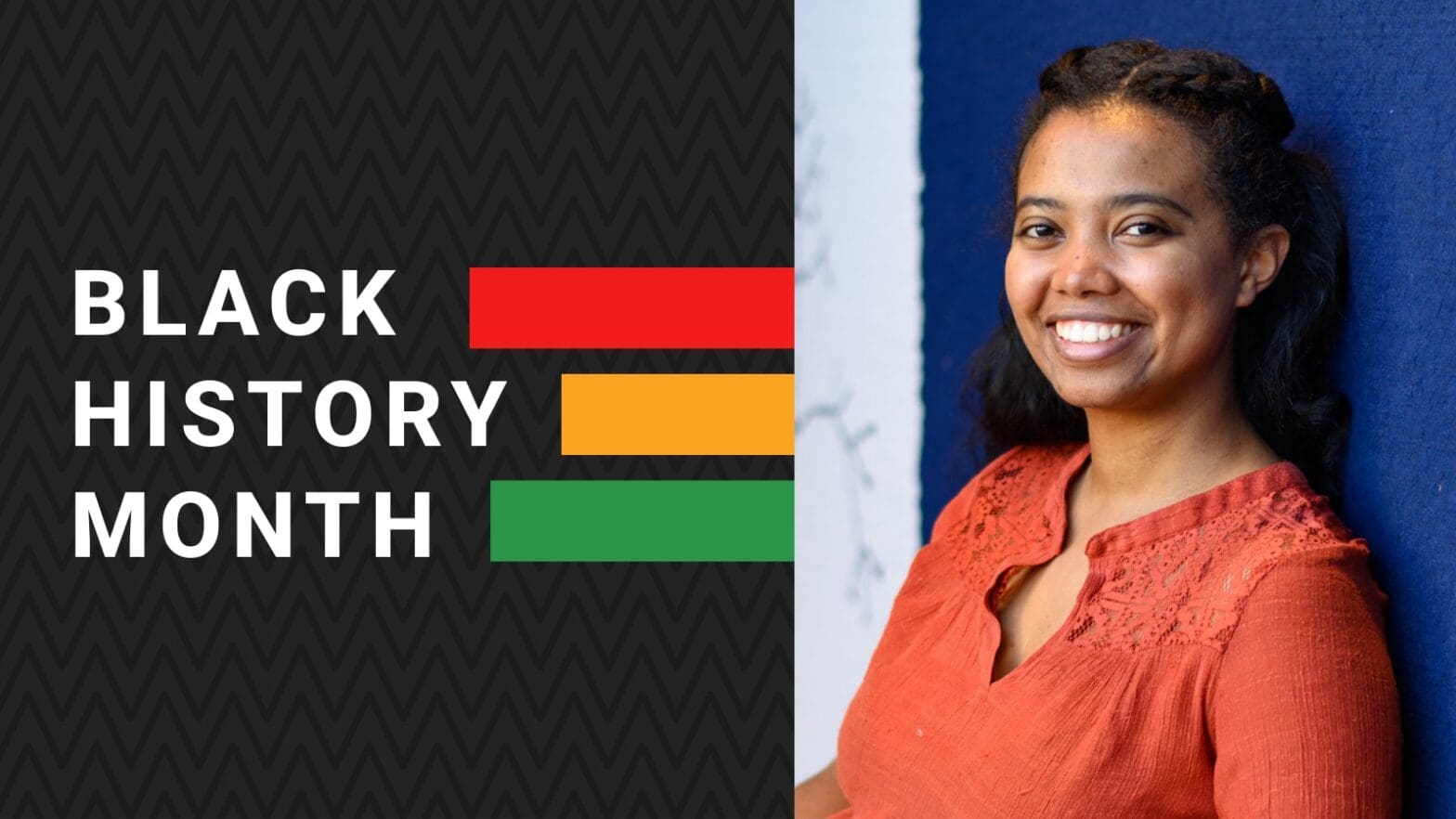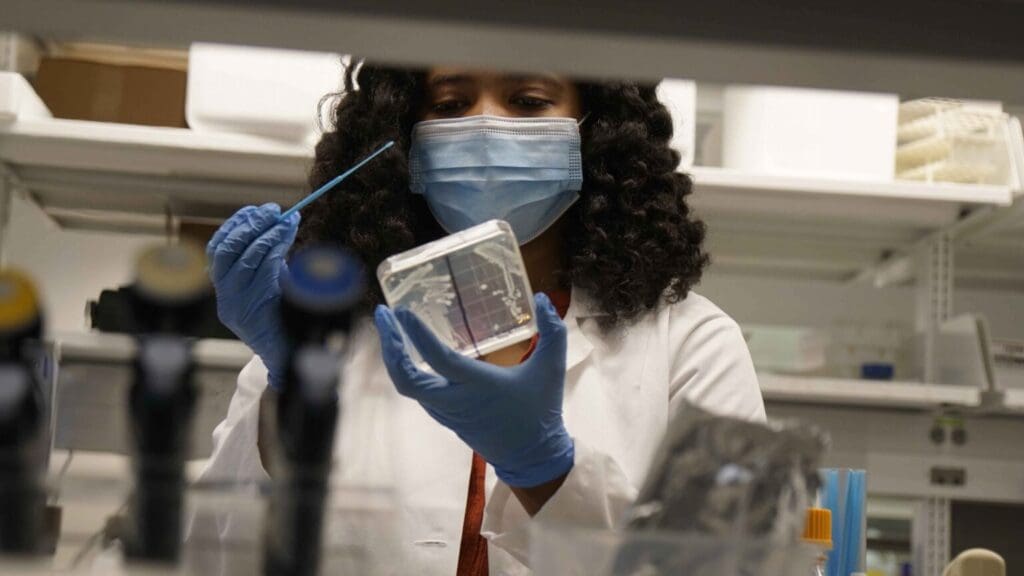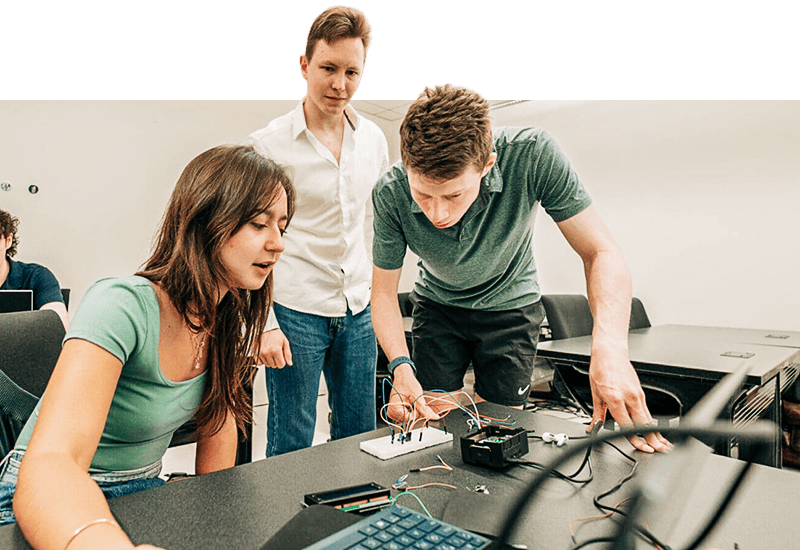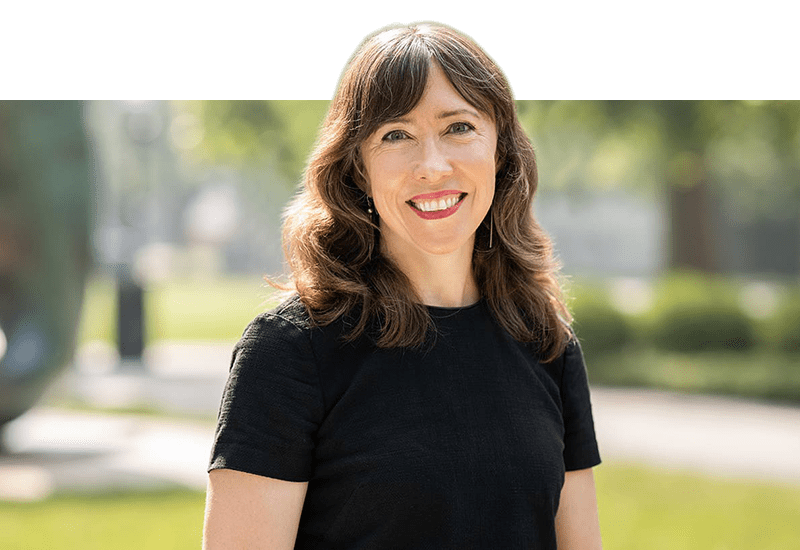
Bioengineer seeks to improve health care access, expand students’ opportunities
By
on
This is from the series Black History Month

Originally from Ethiopia, Lemma earned a bachelor’s degree in biomedical engineering at Brown University. As a Ph.D. student in the laboratory of Mark Brynildsen, associate professor of chemical and biological engineering, she investigates mechanisms of bacterial persistence to antibiotics.
Lemma also serves as a diversity fellow with the Princeton Graduate School, and has mentored undergraduates through programs of the Emma Bloomberg Center for Access and Opportunity. In 2018 she was honored by the graduate school for her outstanding teaching. “This kind of work fuels me,” she said. “I find energy in helping others.”
After completing her degree this spring, Lemma will begin a 10-month Biodesign Innovation Fellowship at Stanford University. The program supports individuals with science, engineering, medical and business backgrounds to identify important health care needs and address them through novel technologies.
“Coming back home [to Ethiopia], I often see how health care technologies or devices are in scarcity, so I want to help alleviate that problem,” she said. “I hope the fellowship will help me learn how to navigate that space and figure out how to make an impact.”
In recognition of Black History Month, Lemma recently spoke about her research, her work to foster access and inclusion at Princeton, and the importance of “diversifying portfolios” for graduate students.
What sparked your interest in science and engineering?
I remember in seventh grade physics class we were learning about gravity and the masses of the different planets. We learned about Newton’s law of gravitational force, and using that equation I was able to calculate the mass of the Earth. I remember going to my teacher and telling him, “I think I just discovered a big thing!” I was so excited because I believed it was new information that people hadn’t discovered before, but he told me it was already discovered.
Ever since then I just loved that feeling of finding out something new. My teacher was very encouraging; he would always come to my desk and ask me, “What’s the new thing you’ve discovered today?” and I always wanted to tell him that I’d discovered something, so I started reading more books and calculating things.
I always loved math and physics, but at the same time I was very intrigued by biology and nature. Quantitatively understanding nature seemed fascinating to me, so I pursued biomedical engineering for my undergraduate degree, and loved it.
What brought you to Princeton, and what have you focused on in your research?
After I finished my undergrad I didn’t feel like I had enough knowledge to go out into the world, so I wanted to expand on what I’d been studying. I liked the Princeton chemical and biological engineering program because of its focus on both chemistry and biology. I believed I could be learning something completely new but also expand on the things I already did, so I decided to come to grad school here, and I joined the Brynildsen lab, which is working on bacterial persisters. Coming from a developing country where infectious diseases like tuberculosis are very prevalent and affecting millions of lives every day, choosing this lab was relatively easy for me.

Bacterial persisters are found in all types of bacteria, and they are different from the antibiotic-resistant mutants that most people are aware of. Mutants have permanent genetic mutations that allow them to survive antibiotic treatment, but the persisters that I study don’t have any permanent mutations. Instead they have transient changes or behaviors that allow them to survive antibiotic treatment for a little bit, but when the cells divide this transient behavior disappears in the next generation.
This behavior actually makes them very difficult to study because they’re hard to capture. We try to devise different ways to model these persisters without actually having to isolate them. One thing we do is use naturally occurring genes from bacteria, toxin and antitoxin genes. We express these genes at different times in the bacteria’s life cycle to emulate this persister behavior. In one of our studies, we used these model persister systems and observed that conditions after the antibiotic treatment are important for bacterial survival. If you make the bacteria halt protein production right after the antibiotic is removed, that actually helps the bacteria survive better.
What other activities have you been involved in at Princeton?
For one summer I was a resident graduate student for the Freshman Scholars Institute (FSI), a program for incoming first-years [many of them first-generation or low-income students] to help acclimate them to the Princeton environment a little bit earlier and build community. They take one or two classes to help prepare them for the fall semester, and the classes count as credit toward their degree. I organized social activities and helped with academic workshops.
The following summer I was a graduate administrative and co-curricular fellow. That year I worked predominantly with summer Scholars Institute Fellows, Princeton undergrads who were taking classes over the summer at colleges and universities around Princeton. I served as a point of contact for their administrative and social needs. Some of the students serve as teaching assistants for the incoming FSI students, so I also helped train them in inclusive teaching pedagogy and answer their questions.
I’ve also been a professional development associate for the University’s graduate school. Here, I analyzed data that was provided by the GradFUTURES team about skills and the labor market for engineering graduates, tracking alumni and seeing the available options for career paths and communicating that with current graduate students. I also collaborated with [Associate Dean for Diversity and Inclusion] Julie Yun and the engineering departments to hold career-centered events for graduate students.
In my current role as one of seven diversity fellows for the graduate school, we predominantly hold social events targeted toward graduate students from underrepresented backgrounds. The main goal is to create community and connections, and a safe space for underrepresented students to voice what they’re feeling and talk about issues that specifically pertain to them.
What advice do you have for graduate students who are just starting out?
Looking back, in the first couple of years I put a lot of emphasis on my graduate work, which we all should, but to a point where I defined myself by my work, so whenever something went wrong it affected me mentally and emotionally to a great extent. Something I learned to do in later years was to diversify myself and redefine myself as more than a graduate student. Then, the failures in experiments which are bound to happen, whoever you are — even if you’re the best grad student —affect you less, so you can get back up and do your work again. I don’t want people to be afraid to diversify their portfolios as they go through their graduate careers.
For information on Princeton University resources and events for Black History Month, please visit https://www.princeton.edu/news/2022/02/04/imani-perrys-selections-black-history-month-plus-university-events-and-resources.






